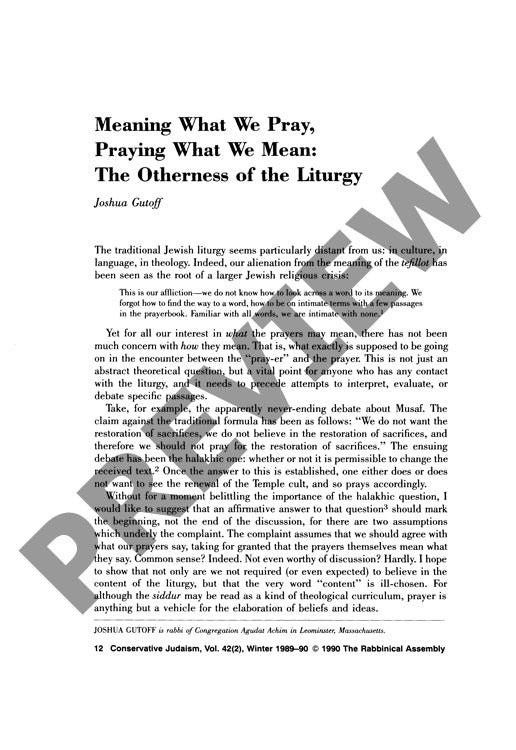Meaning What We Pray Praying What We Mea
Couldn't load pickup availability
The relationship between personal belief and traditional Jewish prayer has long been viewed as necessarily harmonious - yet historical evidence suggests otherwise. When worshippers struggle to connect with liturgical language that seems foreign to their experience, they join a centuries-old conversation documented in rabbinic sources. Through analysis of these sources and liturgical examples, particularly focusing on blessings that contradict personal experience, this research reveals that liturgy functions primarily as 'avodah (service or discipline) rather than as doctrinal instruction. The methodology examines historical precedents from Hazal, analyzes structural differences between liturgy and theological education, and compares traditional and contemporary versions of prayers such as Musaf. Rather than demanding intellectual agreement with propositional content, effective prayer resembles discipleship or play-acting, where worshippers encounter and empathize with the religious personalities behind the prayers. This framework emphasizes kavannah (intentionality) over emunah (belief), transforming prayer into an experiential dialogue with diverse spiritual voices. Meaningful liturgical engagement emerges from acknowledging the "otherness" of traditional texts while developing skills to listen empathetically to their embedded religious experiences. These findings suggest that liturgical education should balance structured prayer discipline with independent spiritual dialogue, allowing historical models of Jewish spirituality to enrich rather than constrain personal religious expression.

More Information
-
Physical Description
-
Publication Information
Published 1989-1990
ISBN
-
Publication Credits
Joshua Gutoff

